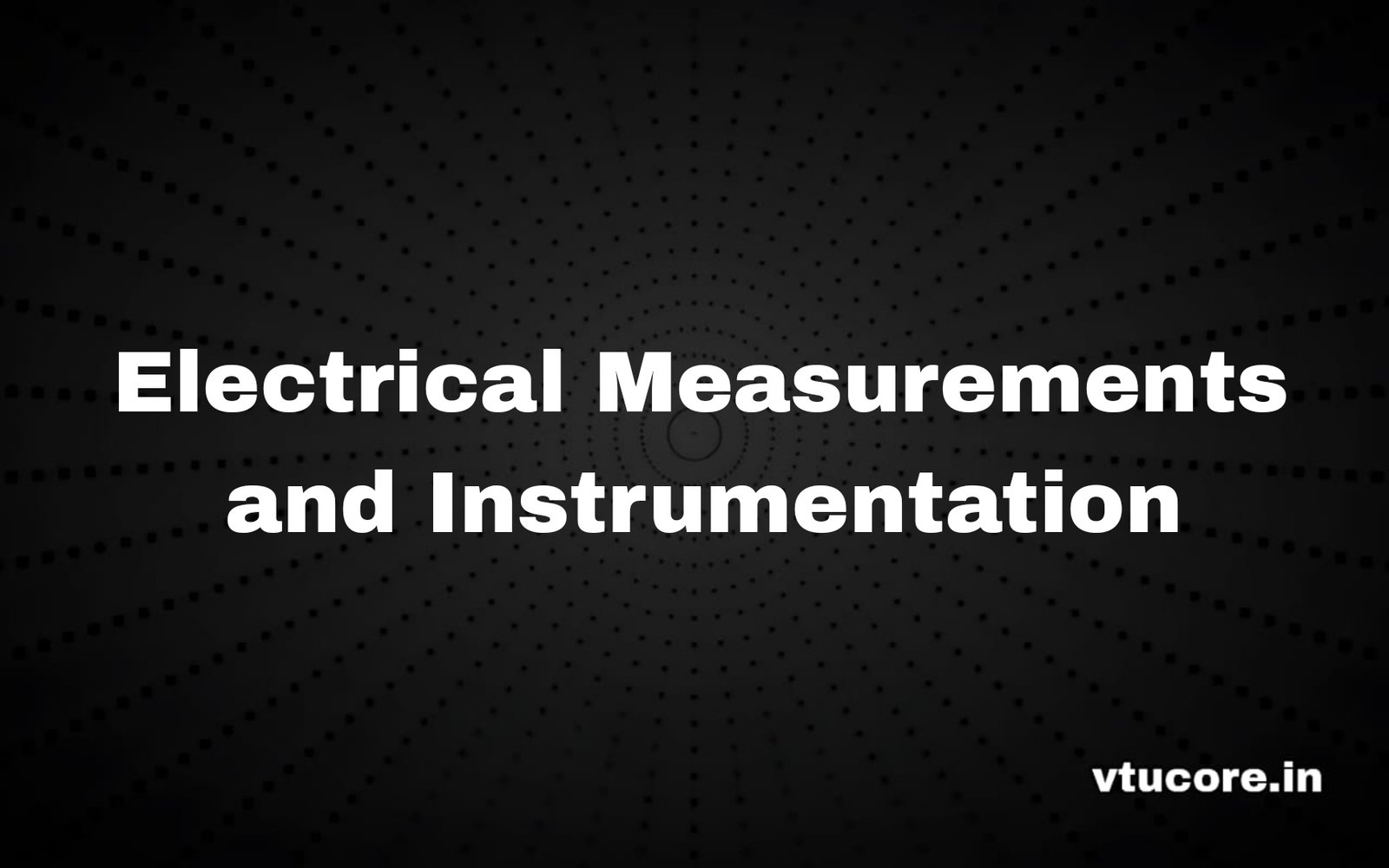Electrical Measurements and Instrumentation BEE306B
Course Code: BEE306B
Credits: 03
CIE Marks: 50
SEE Marks: 50
Total Marks: 100
Exam Hours: 03
Total Hours of Pedagogy: 40H
Teaching Hours/Weeks: [L:T:P:S] 3:0:0:0
Measurements and Measurement systems: Introduction, significance and methods of Measurements, Instruments and measurement systems, Mechanical, electrical and electronic instruments. Classification of instruments. Functions and applications of Measurement systems. Types of Instrumentation systems, information and signal processing. Elements of generalised measurement system. Input-output configurations of measuring instruments and measurement systems. Methods of correction for interfering and modifying inputs, errors in measurements, Accuracy and precision.
Measurement of Resistance: Wheatstone’s bridge, sensitivity, limitations. Kelvin’s double bridge. Earth resistance measurement by fall of potential method and by using Megger.
Measurement of Inductance and Capacitance: Sources and detectors, Maxwell’s inductance and
capacitance bridge, Hay’s bridge, Anderson’s bridge, Desauty’s bridge, Schering bridge. Shielding of bridges. (Derivations and Numerical as applicable).
Instrument Transformers: Introduction, Use of Instrument transformers. Burden on Instrument transformer.
Current transformer (CT): Relationships in CT, Errors in CT, characteristics of CT, causes and reduction of errors in CT, Construction and theory of CT.
Potential transformer (PT): Difference between CT and PT, Relationships in PT, Errors in PT, characteristics of PT, reduction of errors in PT.
Magnetic measurements: Introduction, measurement of flux/ flux density, magnetising force and leakage factor.
Electronic and Digital Instruments: Introduction. Essentials of electronic instruments, Advantages of electronic instruments. True RMS reading voltmeter. Electronic multimeters. Digital voltmeters (DVM) -Ramp type DVM, Integrating type DVM and Successive approximation DVM. Q meter. Principle of working of electronic energy meter (with block diagram), extra features offered by present day meters and their significance in billing.
Display Devices: Introduction, character formats, segment displays, Dot matrix displays, Bar graph displays. Cathode ray tubes, Light emitting diodes, Liquid crystal displays, Nixes, Incandescent, Fluorescent, Liquid vapour and Visual displays.
Recording Devices: Introduction, Strip chart recorders, Galvanometer recorders, Null balance recorders, Potentiometer type recorders, Bridge type recorders, LVDT type recorders, Circular chart and xy recorders. Digital tape recording, Ultraviolet recorders. Electro Cardio Graph (ECG).

